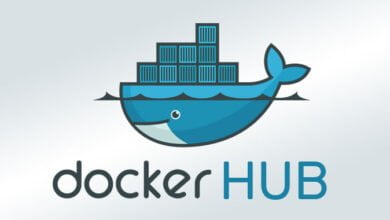Leveraging Automation in Security Testing: The Game-Changer
Modern tools reshaping vulnerability detection and management for the digital age.

Diving Deep into the Power of Security Testing Automation
In the digital landscape of today, cyber threats are evolving at a blistering pace. With every new device that comes online, the digital frontier expands, introducing new vulnerabilities and potential breach points. As businesses and individuals become increasingly reliant on digital services, the stakes have never been higher.
Manually monitoring and countering these threats is akin to trying to empty an ocean with a bucket. The volume, variability, and sheer sophistication of modern cyber threats make manual monitoring both inadequate and time-consuming. This challenge is further magnified by the fact that cyber-attacks can often be stealthy, with breaches sometimes going unnoticed for extended periods.
Enter the realm of automation in security testing, a solution for the modern age. Automation doesn’t just streamline the process; it revolutionizes it. By leveraging advanced algorithms, vast databases, and real-time monitoring capabilities, automated tools can rapidly identify vulnerabilities that might take human testers days or even weeks to uncover.
Moreover, the dynamism of automated testing means it’s adaptive. As new threats emerge and old ones morph, these tools continually update and refine their scanning processes, ensuring they remain at the cutting edge of vulnerability detection. This ensures that organizations can stay one step ahead, proactively identifying and countering threats before they can cause real damage.
In essence, automation in security testing isn’t just another tool in the cybersecurity arsenal. It’s a force multiplier, amplifying the effectiveness of security measures and ensuring that businesses can navigate the treacherous waters of the digital age with confidence and assurance.
The Unparalleled Advantages of Embracing Automation in Security
The intricate dance between cyber threats and security defenses is relentless and dynamic. In the past, security experts were often racing against the clock, trying to spot vulnerabilities before they were exploited. Automation, however, has drastically shifted the balance in this ongoing tussle, offering a slew of benefits that make it indispensable in contemporary cybersecurity.
- Accelerated Testing and Remediation: Traditional security assessments, while thorough, were often bogged down by the sheer volume of data and systems they needed to examine. Contrast this with tools like Nessus and OpenVAS, which utilize automation to rapidly sweep through extensive networks, analyzing and flagging potential weak points. This expedited process ensures that security professionals can promptly shift their focus to rectifying identified vulnerabilities, thereby drastically reducing the window of opportunity for potential attackers.
- Enhanced Accuracy, Reduced Human Error: It’s a fundamental truth that humans, irrespective of their expertise, are prone to occasional oversights. Automation, on the other hand, remains consistent. Take, for example, the tool QualysGuard. It operates with relentless precision, tirelessly cross-referencing its scans against a vast vulnerability database, ensuring that even the minutest irregularity isn’t overlooked.
- Comprehensive and Inclusive Scanning: The digital architecture of modern enterprises is vast and varied, spanning multiple platforms, applications, and configurations. Automated tools are adept at navigating this complexity. Tools like OWASP ZAP are designed to delve deep into web applications, identifying vulnerabilities across different layers, from the user interface to backend databases.
- Proactive, Round-the-Clock Surveillance: Perhaps one of the most transformative features of automation in security is its capacity for continuous monitoring. Instead of the episodic checks of the past, modern tools offer real-time vigilance. Nikto, for instance, specializes in web server vulnerability detection. It doesn’t just scan periodically; it continually monitors for anomalies, offering instant alerts when irregularities are detected.
In the grand tapestry of cybersecurity, automation has emerged as a linchpin, ensuring that defenses remain robust, agile, and ahead of the ever-evolving threat landscape. The amalgamation of speed, precision, and comprehensive coverage that automation brings to the table ensures that organizations can confidently navigate the challenges of the digital age.
The Evolution of Automation in Security Testing: Modern Strategies for a Digital World
In the sprawling landscape of cybersecurity, there’s no shortage of tools. However, some consistently rise to the top, offering unparalleled insights and capabilities. Let’s delve into a few of these vanguards that are making waves in the world of automated security testing.
- Nessus: A veritable titan in the field, Nessus is lauded for its comprehensive vulnerability database. For instance, when a new software patch is released, Nessus is among the first to update its scans, ensuring users are always protected against the latest threats. Furthermore, its ability to integrate seamlessly with other security platforms and its versatility in generating tailored reports make it a top pick for many security professionals.
- OpenVAS: Embodying the spirit of community-driven security, OpenVAS is open-source yet incredibly robust. An example of its prowess is its adaptability; users can custom-tailor its scanning parameters, ensuring that it zeroes in on the specific vulnerabilities pertinent to their organizational landscape.
- QualysGuard: Elevating cloud-based security testing, QualysGuard presents a holistic overview of an entity’s cybersecurity health. An illustrative feature is its dynamic dashboard, which not only highlights vulnerabilities but also categorizes them based on severity, enabling teams to prioritize and strategize their remediation efforts.
- Nikto: A sentinel for web server integrity, Nikto excels at identifying potential weak spots. For instance, it’s adept at pinpointing outdated software versions that might be susceptible to known exploits. With its insights, web administrators can fortify their digital gateways, ensuring optimum user trust and safety.
- OWASP ZAP: Catering primarily to web applications, OWASP ZAP stands out with its dual functionality. A user, for instance, can start by manually identifying a vulnerability and then set the tool on an automated mode to delve deeper into similar potential weak spots, ensuring thorough coverage.
While these tools present a formidable front against potential cyber threats, they’re not silver bullets. The digital realm is nuanced and ever-evolving, and this is where human expertise comes into play. The intelligence and insights offered by these tools, when coupled with the discernment of seasoned professionals, ensure that vulnerabilities aren’t just identified but are also understood in the context of the larger threat landscape. This synergy of machine precision and human intuition is truly the cornerstone of robust cybersecurity in the modern era.
Tailoring Automated Solutions to Enhance Your Security Framework
- Customization is Key: Recognizing that every entity has unique requirements, it’s crucial to adapt and mold your tools accordingly. For instance, an e-commerce platform might prioritize securing user transaction data above all. In contrast, a cloud-based SaaS provider might focus on infrastructure protection. Security tools today, such as OpenVAS, come with modular configurations, allowing teams to zero in on specific vulnerabilities pertinent to their domain.
- Integrative Security Throughout Development: In the fast-evolving world of software engineering, the days of treating security as an afterthought are long gone. Modern development approaches, like DevOps, advocate for security integration from inception to deployment. By intertwining Continuous Integration tools like Jenkins with security assessments, every iteration of software undergoes rigorous checks. This ensures that vulnerabilities are caught and addressed promptly, maintaining the software’s integrity throughout its lifecycle.
Humans at the Helm of Automation:
- Configuring for Precision: While automation promises vast coverage, the tool’s efficiency is determined by its initial setup. Leveraging their insights, professionals can fine-tune these tools for optimal performance. Let’s consider the case of a financial institution using QualysGuard. They can configure the tool to emphasize monitoring data transactions, ensuring that any potential leak or unauthorized access is immediately flagged.
- Deciphering the Data: It’s one thing for a tool to flag a vulnerability and quite another to understand its implications. Automated tools might identify myriad vulnerabilities, but gauging their real-world impact requires human expertise. For instance, Nessus might detect an issue in an older server software. However, a seasoned IT expert would discern that if this software powers a critical application still in use, the issue’s severity skyrockets.
Embracing the power of automated tools while ensuring they’re tailored to an organization’s unique needs and context offers a holistic approach to cybersecurity. While machines bring scale and speed, human intuition and expertise provide the discernment, making for a formidable defense against the ever-growing cyber threats in our digital age.
The Exciting Horizon of Security Testing Automation:
- AI-Powered Predictions: The frontier of security testing is being transformed by Artificial Intelligence (AI) and Machine Learning (ML). Instead of just reactive problem-solving, tools embedded with ML algorithms can now predict potential vulnerabilities. For instance, AI-enhanced systems can analyze previous data breaches and forecast security gaps that hackers might exploit in the future, ensuring preemptive measures.
- Real-Time Threat Intelligence: The digital landscape is a dynamic arena with new vulnerabilities cropping up daily. Forward-thinking security tools are now designed to integrate with real-time threat intelligence feeds. By constantly updating their database, these tools can identify and counteract even the most recent threats. An example is the OWASP ZAP, which integrates with various threat feeds to ensure it’s always primed for the latest vulnerabilities.
- Guardians of the Cloud: With a significant business shift towards cloud platforms like AWS, Azure, and GCP, the need for robust cloud-centric security tools has intensified. These advanced tools, such as CloudGuard by Check Point, not only detect vulnerabilities in cloud infrastructures but also ensure that organizations remain compliant with international standards like GDPR, HIPAA, and more. As businesses continue to harness the cloud’s potential, ensuring its security becomes paramount.
By staying abreast of these pioneering trends and tools, businesses can craft a robust defense strategy, prepared not just for today’s challenges but also for the threats of tomorrow. As the digital era progresses, it’s imperative to continuously refine and enhance security postures, ensuring that both data and infrastructures remain fortified against cyber adversaries.
Automation in Security Testing: Charting Cybersecurity’s Next Frontier
As the digital terrain constantly evolves, so do the multifaceted threats lurking in its shadows. Merely adapting isn’t enough; proactive evolution is essential. Embracing automation in security testing isn’t just a strategic move; it’s a necessity for survival in today’s interconnected world. While tools like OWASP ZAP and CloudGuard bring unparalleled capabilities to the table, their full potential is realized only when paired with human discernment and expertise.
Yet, it’s not solely about the sophisticated algorithms or vast vulnerability databases. The heart of effective cybersecurity lies in the synthesis of cutting-edge tools and the nuanced judgment of seasoned professionals. It’s this harmonious blend of machine precision and human intuition that crafts an impenetrable defense matrix, ensuring that organizations can weather any cyber storm.
For those eager to remain at the forefront of cybersecurity trends, platforms like BugBustersUnited serve as invaluable resources. Beyond just a repository of knowledge, they foster a community where professionals converge, exchange insights, and collectively strategize. Such collaborative platforms elevate individual expertise, forging a united front against the ever-advancing cyber threats.
In conclusion, as we steer into the future of the digital age, equipping ourselves with the right tools and fostering collaborative learning are our best bets against the relentless tide of cyber adversities. The journey might be fraught with challenges, but with automation as our ally and collective expertise as our compass, the path to cybersecurity becomes clearer and more navigable.




